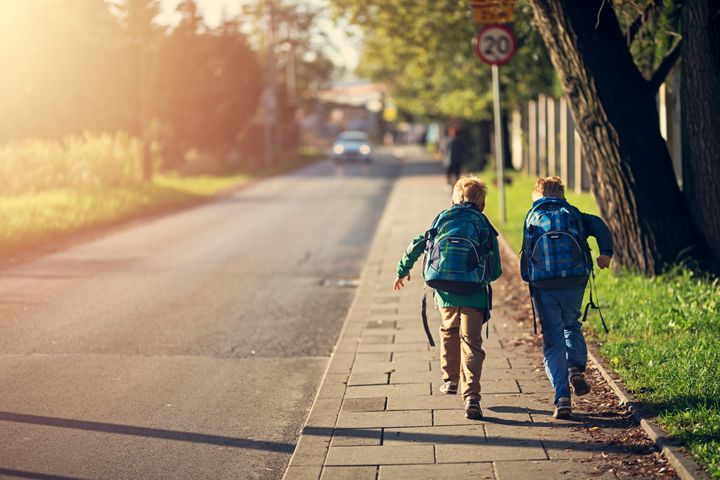Thousands of children in the UK are being exposed to alarming levels of pollution during the school run, putting them at increased risk of stunted lung and brain growth and life-long respiratory conditions, according to a new study.
Research by Unicef UK and Queen Mary University of London found children are exposed to more than 60% of their daily air pollution intake while on their journey to or while at school.
Pollution exposure is lowest when children are at home.
Unicef has warned that these periods of exposure are damaging the health of thousands of schoolchildren and has called on the Government to take action.
Conveying the severity of the situation, Professor Jonathan Grigg of the Royal College of Paediatrics and Child Health (RCPCH) told HuffPost UK: “Research suggests early exposure [to pollution] increases the risk of asthma and lung infections and these can be fatal.”

Lucy Harbor is mum to seven-year-old Leo and an active air pollution campaigner. Her son’s school sits next to a busy main road and Lucy claims around 500 buses stop outside the playground during the school day.
Leo has experienced respiratory problems in the past and on his first day of school, Lucy said she was shocked by how many other parents handed the teachers asthma medication.
“It’s hard not to worry that living where we live, near to a busy main road, and going to school where he does, may have affected his lungs,” she said.
Unicef’s study focused on black carbon, a form of particulate matter. These tiny particles are the most dangerous pollutant for health due to their ability to penetrate deep into the lungs and enter the bloodstream and potentially the brain.
For babies and children, exposure during these critical stages of development can stunt lung and brain growth and cause life-long respiratory conditions, such as asthma.
The study saw six children carrying a MicroAeth personal monitor, allowing researchers to monitor their exposure to black carbon and identify peaks. Monitoring took place over a 24-hour period on a weekday in order to assess the points at which children were most exposed to black carbon on a ‘normal’ school day.
The research forms part of a larger study by Queen Mary’s University London. In this instance, it only looked at children in London, but Unicef said it plans to commission further comparative studies across UK towns and cities.
Amy Gibbs, the charity’s Director of Advocacy, labelled the research findings as “distressing”.
She said: “Every day, thousands of children across the UK are setting off on a toxic school run that could impact their lifespan and contribute to serious long-term health problems.
“Parents already have numerous worries about health and safety risks to our children. The quality of air they breathe in the playground or as they walk to school should not be yet another burden.
“We cannot afford to continue to overlook this invisible but serious threat; change is possible if the Government acts now. It is critical that it sets out a clear strategy with sufficient funding to protect children from the harmful effects of toxic air, when and where they are proven to be most at risk.”
RCPCH’s Prof Grigg added: “More than half of the UK’s entire transport system uses diesel - buses, vans and lorries, forms of water transport, trains, and construction and farm machinery. To help protect children’s health we must promote alternatives.
“The Government, employers and schools must encourage and facilitate better use of public transport and active travel options like walking, cycling or scooting to school. To do this safely, cycle networks must be expanded and spaces away from traffic developed so children and their parents can choose walking and cycling over their car without the fear of pollution and its invisible harms deterring them.”